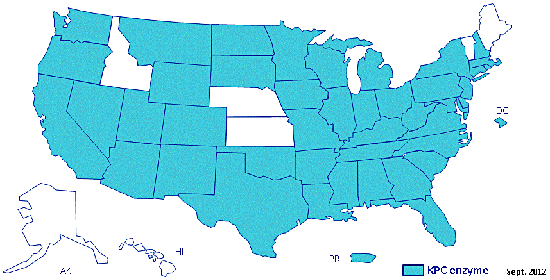The End of Antibiotics?
Maryn McKenna has an unsettling and sobering article at Nature examining the the emergence of carbapenem-resistant Enterobacteriaceae. Since 2002, this large family of bacteria, gram-negative organisms that include many symbionts as well as the gut-dwelling Escherica coli and Klebsiella species that cause hospital infections, are increasingly in possession of a carbapenem-resistance gene rending our best antibiotics useless.
A map of the United States showing states with carbapenemase-producing CRE that promote resistance to carbapenem antibiotics as confirmed by CDC as of September 2012.

A graph from the Center for Disease Dynamics, Economics & Policy. Isolates of cabapenem-resistant Klebsiella pneumoniae have emerged since the early 2000s and are becoming increasingly common throughout the country with resistance rates rising from 0% until 2002 to 4.5% in 2010. K. pneumoniae, a member of the Enterobacteriaceae family, causes the vast majority of hospital-borne urinary tract infections (UTIs) and bloodstream infections. Click for source and to see an interactive version of this image.
In 2011, the CDC released a fact sheet for the public, “Antibiotics: Will they work when you really need them?” to help promote responsible antibiotic usage. In a decade, will we even be able to ask this question?
Resources
The World Economic Forum releases an annual survey, the Global Risk report, on the top 50 risks facing our world. Their 2013 report included antibiotic-resistant bacteria as one of those risks, citing destabilization to our health systems and food supply, imperiling the practice of common medical procedures, and the fact that none of the antibiotics and drugs that are currently in the development pipeline would be able to protect us against certain bacteria. Must read.
The End of Antibiotics? - Body Horrors | DiscoverMagazine.com

No hay comentarios:
Publicar un comentario
Nota: solo los miembros de este blog pueden publicar comentarios.